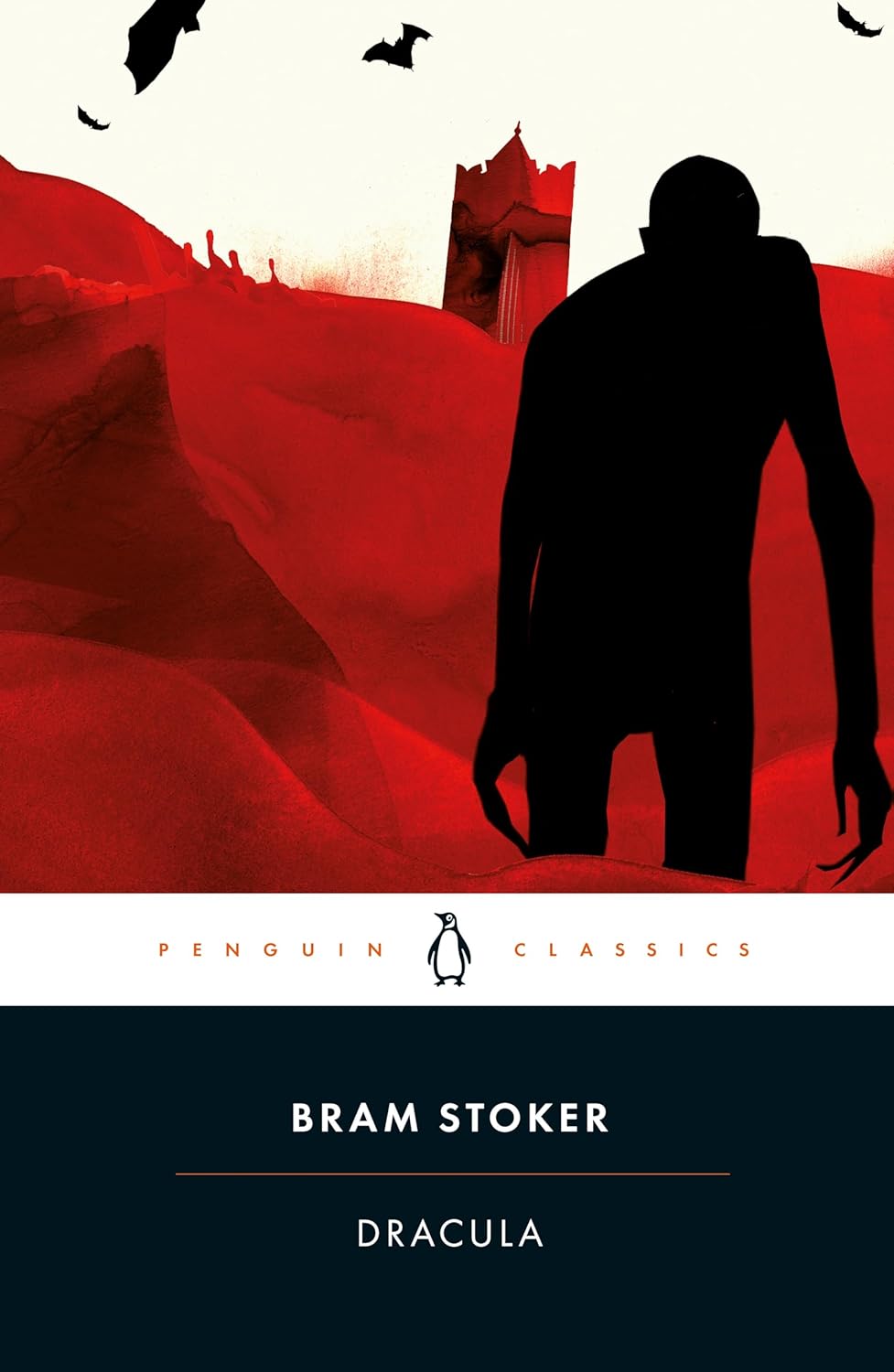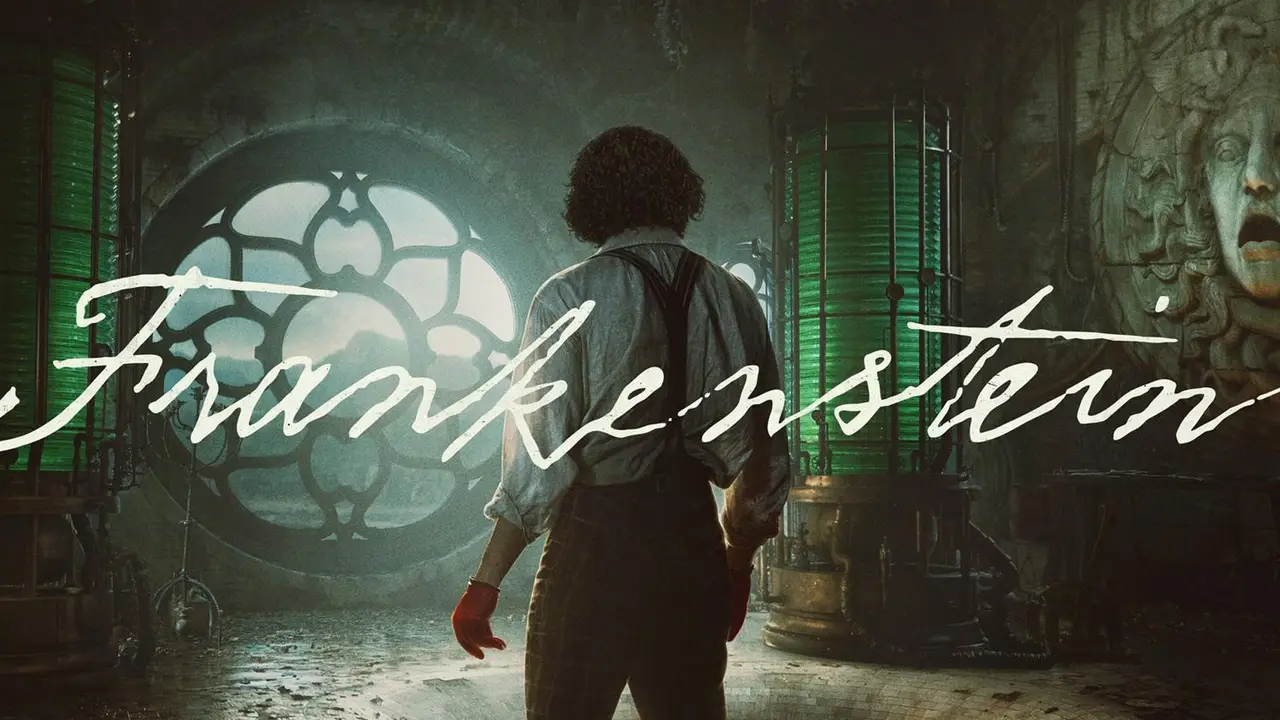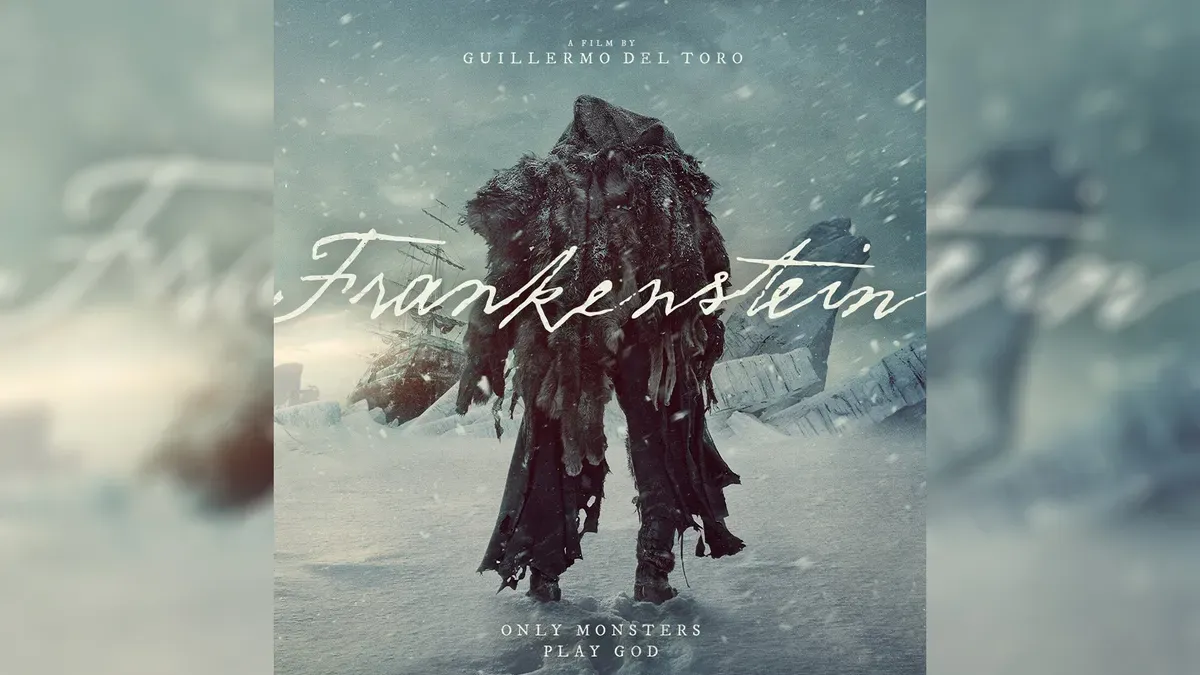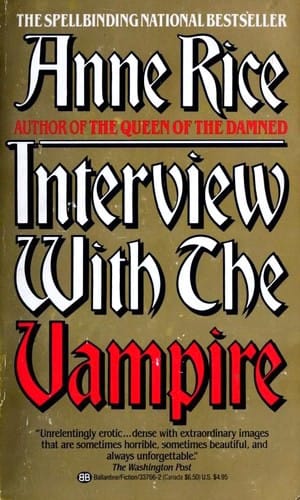5.2 Mini brief 2 - Media Diet
Looking back at some of the things I've looked at recently in the recent week and some of the things that interested me were my re-read of Dracula, the modernisation of Frankenstein with the film coming out this year and another novel with a movie adaptation, that I'm yet to read but what I have watched, Interview with a vampire. Personally, it seems like I'm on a gothic literature kick at the moment but I've always enjoyed the topic of such. There's some videos below that go into more detail and/ or give perspective on each thing that I found interesting as well as videos I watched because why not?
Dracula by bram stoker:

Dracula is an 1897 gothic novel by Irish author Bram Stoker. The narrative is related through letters, diary entries, and newspaper articles. It has no single protagonist and opens with solicitor Jonathan Harker taking a business trip to stay at the castle of a Transylvanian nobleman, Count Dracula. Harker flees after learning that Dracula is a vampire, and the Count moves to England and plagues the seaside town of Whitby. A small group, led by Abraham Van Helsing, hunts and kills him. The novel was mostly written in the 1890s, and Stoker produced over a hundred pages of notes, drawing extensively from folklore and history. Stoker also adopted some characteristics of folkloric vampires for his own, such as their aversion to garlic and staking as a means of killing them. He invented other attributes—for example, Stoker's vampires must be invited into one's home, sleep on earth from their homeland and have no reflection in mirrors. So he did take some creative liberties when writing 'his' vampire. It's still a classic regardless and a really good novel; I love it.
Prior to writing the novel, Stoker researched extensively, assembling over 100 pages of notes, including chapter summaries and plot outlines. He sourced some of his research and inspiration from the library at Whitby in the summer of 1890 but most was done at the London Library. There are still records of his notes and writings prior to the novel itself as well. The book itself was bound in yellow cloth and titled in red letters. Dracula was published in May 1897 by Archibald Constable and Company; costing around six shillings. Accurate as of 2024, a shilling today would be worth 6 pence. This is based on the decimalisation of the coin back in 1971 and the most recent inflation figures. So looking at six shillings it would be around 36 pence. Uncertainty exists around the exact date of publication, but it was probably published on 26 May 1897.
(https://en.wikipedia.org/wiki/Dracula)
A lot of speculation suggests that the count was inspired by Vlad the impaler and countess Elizabeth Bathory both of which were known for bouts of murder and manipulation; perfect for a monster. I think Elizabeth Bathory was more of an inspiration for the count; Countess Elizabeth Báthory of Ecsed was a Hungarian noblewoman and serial killer from the powerful House of Báthory, who owned land in the Kingdom of Hungary (now Slovakia). Báthory and four of her servants were accused of torturing and killing hundreds of girls and women from 1590 to 1610. Bathory and her cohorts were charged for 80 counts of murder and were convicted. Her servants were put on trial and convicted. The servants were executed, whereas Báthory was imprisoned within the Castle of Csejte (Čachtice) until she died in her sleep in 1614.Legends describing her vampiric tendencies, such as the tale that she bathed in the blood of virgins to retain her youth, were based on rumours and only recorded as supposedly factual over a century after her death. Although these stories were repeated by at least three historians in the eighteenth and nineteenth centuries, they are considered unreliable by modern historians.
(https://en.wikipedia.org/wiki/Elizabeth_Báthory)
Frankenstein:

As Wikipedia puts it; 'Frankenstein is a 2025 American gothic drama film produced, written and directed by Guillermo del Toro, based on Mary Shelley's 1818 novel Frankenstein; or, The Modern Prometheus. The film stars Oscar Isaac as Victor Frankenstein, Jacob Elordias the Creature, and Mia Goth as Elizabeth, with Felix Kammerer, David Bradley, Lars Mikkelsen, Christian Convery, Charles Dance, and Christoph Waltz in the supporting roles. The story follows the life of Victor Frankenstein, an egotistical scientist whose experiment in creating new life results in dangerous consequences.'
And in 2007, Guillermo del Toro said that a project which he "would kill to make" would be a faithful "Miltonian tragedy" version of Frankenstein, citing Frank Darabont's "pretty much perfect" script, which evolved into Kenneth Branagh's film Mary Shelley's Frankenstein. In January 2008, he revealed that he was then in the process of crafting drawings which he hoped to use as a basis for the world of the film, and that, additionally, he had begun taking script notes but stopped once the WGA strike occurred. The following month, del Toro said of his vision:
What I'm trying to do is take the myth and do something with it, but combining elements of Frankenstein and Bride of Frankenstein without making it just a classical myth of the monster. The best moments in my mind of Frankenstein, of the novel, are yet to be filmed [...] The only guy that has ever nailed for me the emptiness, not the tragic, not the Miltonian dimension of the monster, but the emptiness is Christopher Lee in the Hammer films, where he really looks like something obscenely alive. Boris Karloff has the tragedy element nailed down but there are so many versions, including that great screenplay by Frank Darabont that was ultimately not really filmed.
I will say after watching the trailer I found that it really shows the difference in dynamic between Frankenstein and the monster; it shows that the monster isn't just a scary idea, it's also its own being. I think having read the book I wanted more of the idea of both of them being broken and corrupted in their own right. The film has been described as Gothic romanticism, in the vein of del Toro's own Crimson Peak (2015) or such films as Neil Jordan's Interview With The Vampire (1994) and Coppola's Bram Stoker's Dracula (1992). It also reminds me of sleepy hollow (1999).
I also really liked the cinematography within the trailer itself. The dynamic camera shots are amazing - it proves you don't need a lot to make something effective. The way the trailer is edited is really good too as it still encapsulates the feelings while also being modernised. The movie posters are very simple; while visually cryptic, the new Frankenstein posters have a palpably eerie quality, embellished by bespoke script font that gives the designs a literary quality in line with the original novel. Faceless silhouettes of (presumably) Frankenstein and his monster lurk above a powerful tagline reading, "only monsters play God", intensifying the mysterious quality of the design. They're amazing!!!

(https://en.wikipedia.org/wiki/Frankenstein_%282025_film%29#Filming)
Interview with a vampire by Anne Rice:

Interview with the Vampire is a gothic horror and vampire novel by American author Anne Rice, published in 1976. It was her debut novel. Based on a short story Rice wrote around 1968, the novel centers on vampire Louis de Pointe du Lac, who tells the story of his life to a reporter. Rice composed the novel shortly after the death of her young daughter Michelle, who served as an inspiration for the child-vampire character Claudia. It has also been adapted into both a movie (1994) and a series (2022) with the series having two current seasons and one in the making. Now, as someone who's watched both the film and the series, to its current season, I will say I absolutely love the story. The main premise of the start of the book, as well as the film, is as such; In 1791, Louis is the young master of a large indigo plantation in colonial Louisiana. Distraught by the death of his younger brother Paul, he begins wandering the streets at night drunk and disheveled, hoping to be murdered. One night, he is approached by a French vampire named Lestat de Lioncourt, who senses Louis' despair. Concluding that the loss of his humanity will free him from grief, he accepts Lestat's offer to become his companion and is turned into a vampire.
After many rejections from publishers Rice attended the Squaw Valley Writer's Conference at Squaw Valley where she met she met her future literary agent, Phyllis Seidel. In October 1974, Seidel sold the publishing rights to Interview with the Vampire to Alfred A. Knopf for a $12,000 advance of the hardcover rights, at a time when most new authors were receiving $2,000 advances. Interview with the Vampire was published in April 1976.
The cover of Interview With the Vampire uses bold Gothic typography and a limited color palette to evoke a dark, luxurious atmosphere. The gold-brown background suggests age and decadence, while the contrasting white and red lettering—especially the blood-red “Vampire”—draws the eye and reinforces the novel’s sensual, gothic tone. With no imagery, the design relies entirely on its dramatic typography and color contrasts to convey mystery, sophistication, and horror, perfectly reflecting Anne Rice’s blend of elegance and the macabre.
The story itself runs a lot deeper than just the short story mentioned at the top; it has lore that runs deep behind it. The novel is adapted through the first two seasons, with elements from The Vampire Lestat being used during season two and being the basis for season three (Lestat being a main character within the story). There are multiple novels that are part of a series titled 'the vampire chronicles', here they are in order:
- Interview with the vampire (1976
- The vampire Lestat (1985)
- The queen of the damned (1988)
- The tale of the body thief (1992)
- Memnoch the devil (1995)
- The vampire Armand (1998)
- Merrick (2000)
- Blackwood Farm (2002)
- Blood Canticle (2003)
- Prince Lestat (2014)
- Prince Lestat and the realms of Atlantis (2016)
- Blood Communication (2018)
There's a massive rabbit hole that you could go down looking into all of these things like the folklore behind vampires and their origins or the more cringey movies/ books created based on vampires, like twilight (2008) for example, that present more ideas surrounding them. I do really love the historical approach to anything within any topic no matter what it is that I'm looking into regardless of what it is. I think when people think of consuming information they automatically assume googles at play but the internet isn't the only source of gathering information/ inspiration; it is a great tool to use but I believe we still forget previous endeavours.


